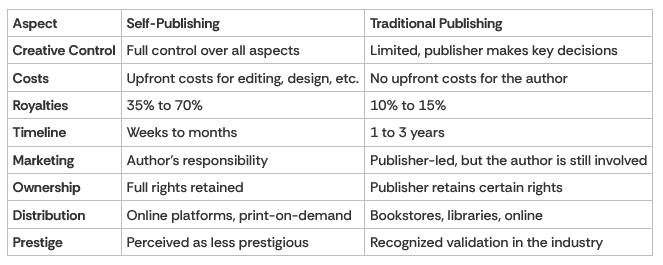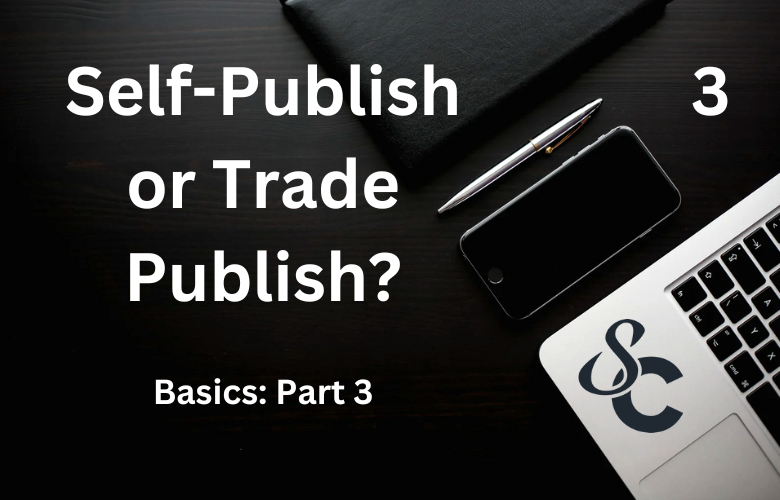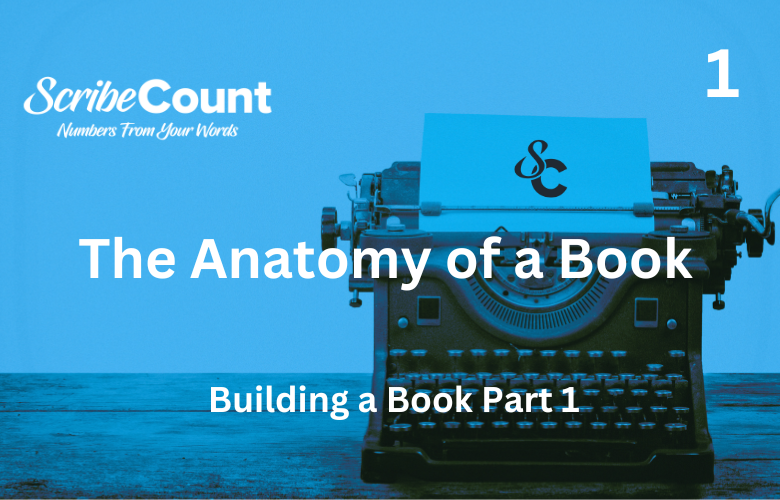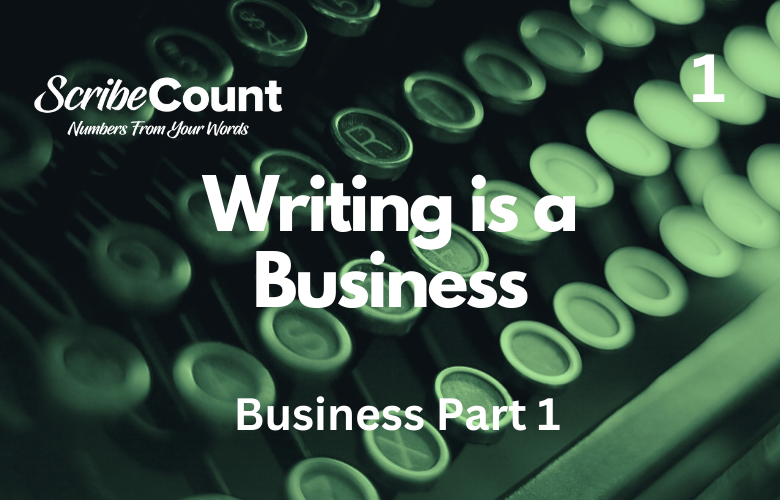Self-Pub or Trade Pub?
Some History to know before you start.
Before the advent of self-publishing, authors had only one path to becoming published authors. That path was known as Traditional Publication, and it was a monopoly for decades. Dominated by a handful of publishing houses authors were required to query an agent, have that agent agree to represent them, pitch their book to the publishing house, and then, if accepted, get a 3-6 month chance to sell on the shelves of the bookstores. The process was slow, unyielding, and very few authors achieved the levels they had aspired to.
That all changed in 2008 with the arrival of the Kindle and its offspring Kindle Direct Publishing. These Amazon products and services allowed the aspiring author to bypass the traditional publishers and go directly to the readers, and thus the self-publishing industry was born.
While Traditional Publishing still dominates the market and plays a valuable role in the world of the written word, self-publishing is taking up a larger portion of the market every year. Over the last several years the tools and services available to self-publishers have evolved to the point that one can no longer differentiate between a trade-published book and that of a self-published author.
With two paths to publication now available the choice between self-publishing and traditional publishing is one that every author must make for themselves. In this post, we’ll weigh the pros and cons of each in an effort to help you make your decision.
There
are no right or wrong answers here, this decision is all about you choosing which
option is best for you and your book while factoring in your time and your
budget. You may opt to try the traditional route first and then switch to
self-publishing when that proves to be unproductive, or you may try to
establish yourself as an author through self-publishing and then pursue a
traditional deal afterward. You may end up with books traveling down both paths,
which is known as a hybrid deal. The choice is up to you.
Self-Publishing vs. Traditional Publishing: A Comprehensive Comparison
Making an informed decision first requires an understanding of how both systems work. We’ll discuss the process, costs, timelines, and marketing implications of each in a step-by-step manner. By the end, you'll have a clearer understanding of which path might be best for your publishing journey.
What is Self-Publishing?
Self-publishing refers to the process of publishing a book independently without the involvement of a traditional publishing house. Authors handle (or outsource) everything from editing to cover design to marketing and distribution. Platforms like Amazon Kindle Direct Publishing (KDP), IngramSpark, and Draft2Digital make it accessible for writers to publish their work and reach a global audience.
What is Traditional Publishing?
Traditional publishing involves submitting your manuscript to literary agents or publishing houses. If accepted, the publisher takes on the responsibility of editing, designing, marketing, and distributing the book. In return, authors typically receive royalties and may be given an advance.
Pros and Cons of Self-Publishing
Pros:
- Creative Control
- Authors retain full control over the content, design, and marketing strategies of their book.
- No editorial restrictions mean you can stay true to your vision.
- Faster Time to Market
- You can publish a book within weeks or months, depending on how ready your manuscript is.
- Higher Royalties
- Self-publishing platforms like Amazon KDP offer royalties ranging from 35% to 70%, significantly higher than traditional publishing royalties, which average 10% to 15%.
- Global Reach
- Platforms like KDP, Google Play, and iBooks allow your book to be available worldwide, both as an eBook and via print-on-demand.
- Ownership
- You retain the copyright to your book, allowing for reprints, adaptations, or revisions without external approval.
Cons:
- Upfront Costs
- Expenses for editing, cover design, formatting, and marketing can add up.
- Time-Consuming
- Handling every aspect of publishing, from production to marketing, requires significant time investment and can be overwhelming.
- Lack of Industry Validation
- Without the backing of a traditional publisher, some readers may perceive your book as less credible.
- Marketing Challenges
- You’re responsible for building your audience and promoting your book.
Pros and Cons of Traditional Publishing
Pros:
- Professional Team
- Publishers provide editors, designers, and marketers to polish and promote your book.
- Advance Payment
- Many traditional publishers offer an advance against future royalties.
- Established Distribution Channels
- Traditional publishers have access to bookstores, libraries, and media outlets.
- Prestige and Credibility
- Being published by a recognized house can enhance your reputation as an author.
Cons:
- Lengthy Process
- It can take years to secure a publishing deal and see your book on shelves.
- Lower Royalties
- Authors typically earn less per book sold compared to self-publishing.
- Lack of Creative Control
- Publishers often make final decisions on edits, cover design, and marketing strategies.
- Rejection Rates
- The competitive nature of the industry means many manuscripts are rejected.
Comparative Chart:

Marketing Considerations
Self-Publishing Marketing
Marketing a self-published book requires strategic planning and effort. Here are some key strategies:
- Social Media
- Build an author platform on FaceBook/Instagram, X, or TikTok to engage potential readers.
- Email Marketing
- Create a mailing list/newsletter to keep readers informed about new releases and promotions.
- Amazon and Facebook Ads
- Utilize these advertising tools to promote your book directly to interested readers.
- Book Launch
- Host virtual or in-person events to create buzz around your release.
- Collaborations
- Partner with bloggers, influencers, or other authors to expand your reach.
- Website
- Build and maintain a website to showcase your work and attract/interact with your readers.
Traditional Publishing Marketing
While publishers handle much of the marketing, authors are still expected to contribute by:
- Engaging on Social Media
- Maintaining an active online presence.
- Attending Book Events
- Participating in book signings, readings, and literary festivals.
- Networking
- Building connections within the literary community.
Costs Breakdown:

Timeline to Publication
- Self-Publishing: Depending on your preparedness, you could publish a book in as little as a few weeks to a few months. This flexibility allows authors to respond quickly to trends or opportunities.
- Traditional Publishing: The process typically takes 1 to 3 years, including time for finding an agent, securing a deal, and undergoing extensive editing and marketing processes.
Why Self-Publishing Might Be the Right Choice
For authors who value creative control, faster timelines, and the potential for higher royalties, self-publishing is an attractive option. The ability to retain rights and experiment with marketing strategies offers a level of freedom that traditional publishing often cannot match. While it requires significant effort and investment, self-publishing empowers authors to build their brand and connect directly with readers.
Here's some data regarding Self-Publishing:
- The global publishing market is expected to grow at 1% CAGR per year, whereas the self-publishing market is expected to grow at 17%.
- Amazon pays $520 million in royalties to self-published authors each year.
- 300 million self-published books are sold each year.
- The number of self-published books has increased by 264% in the last five years.
- $1.25 billion worth of self-published books are sold each year.
- The average self-published book sells for $4.16.
- 30-34% of all ebooks sold are self-published.
- Self-publishing platforms pay up to 70% of each book sold to authors.
- Self-published authors do not receive an advance and have to put up the costs of publishing and advertising themselves.
- Independent authors who sell their books on their own websites receive up to 96%.
- The average self-published book sells 250 copies.
- The average self-published author makes $1,000 per year from their books.
- 33% of self-published authors make less than $500 per year.
- 90% of self-published books sell less than 100 copies.
- 20% of self-published authors report making no income from their books.
- More than 1,000 self-published authors made $100,000 last year from Amazon.
- Of authors who have published their first book in the last 10 years:
- 1,200 traditionally published authors have earned $25,000+ a year
- 1,600 self-published authors have earned $25,000+ a year
- 85% of Kindle Unlimited books are self-published.
- Self-published books account for 31% of Amazon’s ebook sales.
Traditional publishing, though prestigious, can be slow, competitive, and restrictive. For writers eager to get their stories into the world on their own terms, self-publishing presents a compelling alternative.
Final Thoughts
The choice between self-publishing and traditional publishing is deeply personal and depends on your goals as an author. By understanding the pros, cons, and realities of both paths, you can make an informed decision that aligns with your vision for your writing career. With the right approach, either route can lead to success—but for those ready to take charge of their publishing journey, self-publishing might just be the perfect fit.
Here at ScribeCount we obviously lean heavily toward the self-publishing route. With the traditional world of publication being increasingly disrupted with every passing year the opportunities available for self-published authors are growing exponentially.




